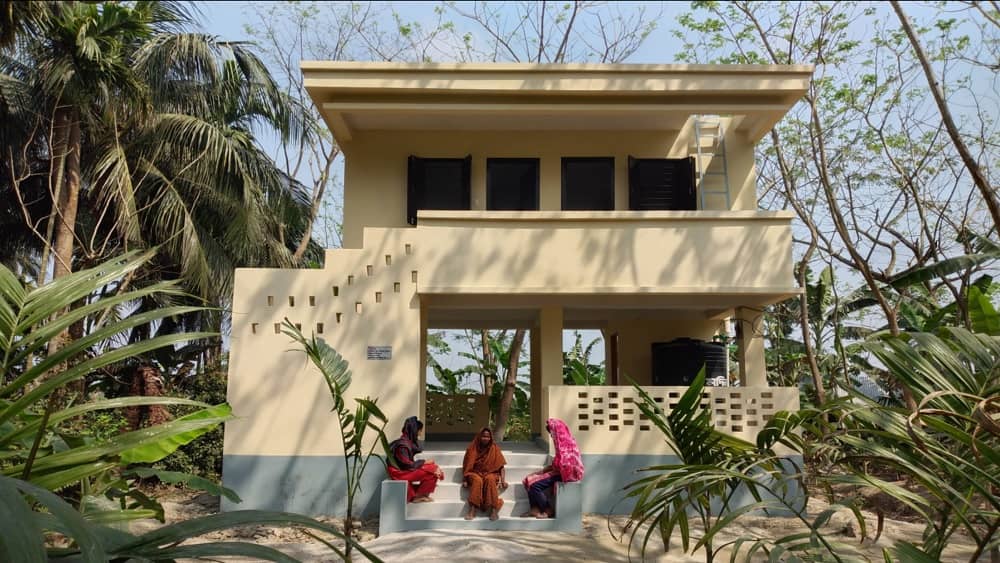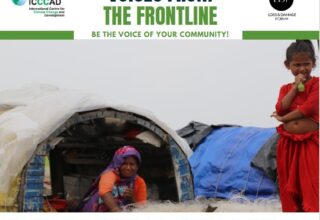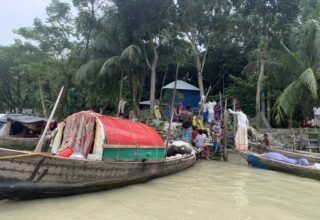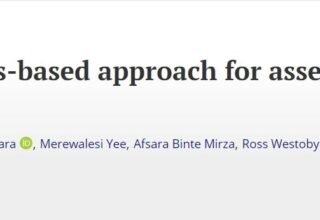
Climate change has and will continue to increase the intensity and frequency of global hydro-meteorological events such as cyclones and storm surges. Bangladesh is a country of more than 160 million people, with 35 million people residing near the coastline. Naturally, it is a hotspot for such cyclonic events.
Numerous researches have highlighted that, on average, Bangladesh faces the most destructive cyclones. In the last 100 years, 508 cyclones have hit Bangladesh.
Among these numerous catastrophes, the most severe cyclones were the great Bhola cyclone (1970), Gorky (1991), Sidr (2007), Aila (2009), Bulbul (2019), and Amphan (2020). All these have battered the coastal area of Bangladesh.
Cyclonic events since 1970
The great Bhola cyclone of 1970 was marked as the deadliest cyclone by Environmental System Research; it had a wind speed of 222km/h, a storm surge of 5.5 m height, and made landfall in Bhola District. Around 5,00,000 deaths were reported.
On 29 April, 1991, Gorky hit Chattogram and Cox’s Bazar, with a velocity of 260 km/h. However, a reduced death toll of 1,38,958 was reported at that time. Later, in 2007, Sathkhira-Khulna-Bagherhat experienced Sidr, which was of similar velocity and led to around 4,000 deaths.
The remarkable reduction in deaths in Bangladesh resulted from improved early warning systems, engagement of trained volunteers, increased number of shelters, and enhanced institutional capacity.
Amphan was the recent reminder of Bangladesh’s vulnerability to cyclones. Although only 26 deaths were reported during the event, loss of infrastructure, crops, and cattle was barely reduced.
Cyclone shelters and early warnings
In 1970, when the cyclone struck Bhola, only 44 cyclone shelters were present in the country, with almost non-existent pre-disaster plans. With only two coastal radars in Bangladesh and satellite images from other organisations such as the US-based National Earth Satellite Centre (NESC), there would often be delays in disaster warning.
However, Bangladesh now has more than 50 weather stations, balloons, and radars; receives information from national and regional offices of World Meteorological Organisation (WMO); while the weather agency gives forecast information at national and local levels, sending early warnings via radio, text messages, television alerts, and announcements over mosque speakers.
Furthermore, the increased number of cyclone shelters plays a huge role in saving lives. Today, according to the International Federation of Red Cross and Red Crescent Societies (IFRC), Bangladesh has more than 14,000 shelters, which have the capacity to accomodate 2.4 million people.
As a result, over the last 25 years, the number of fatalities has been reduced by 75%.
Bangladesh has also improved in terms of deploying women volunteers and staff to ensure women’s safety. After cyclone Bhola, Bangladesh Red Crescent Society established the Cyclone Preparedness Programme (CPP) for better warning system and evacuation.
CPP now has 200 staff and 76,000 volunteers, out of which, half are women. Increased number of women volunteers has helped in ensuring women’s security in the shelters, helped in evacuation of women, as they were the last ones to move out during cyclones. These initiatives have helped in reducing the number of deaths.
While Bangladesh is praised for reducing the death toll 100 fold during cyclones, the country is yet to secure livelihood and properties of vulnerable communities. Over the past 30 years, the number of cyclone shelters have increased from 400 to 14,000, but it is still insufficient for the 35 million living near the coast.
Additionally, cyclone shelters’ proscribing of livestock and assets encourage people to stay home. People need to walk long distances over muddy roads to even get to the often overflowing shelters, where, only two-square feets of space is conferred per person.
As a result of these inconveniences, people, especially women and children, often choose to stay at their homes, where they are at risk.
Post-disaster scenarios
The post-disaster scenario is even worse. Flood, salinity intrusion, waterlogging, food scarcity, loss of agricultural lands, loss of property and infrastructure are some of the consequences of cyclones that communities have to deal with.
An aftereffect of cyclones is freshwater scarcity. It forces people to use saline water. Women and adolescent girls have been reported to suffer from gynaecological problems after using saline water during menstruation. Additionally, salinity intrusion, flood, and water logging leads to huge agricultural and aquacultural losses to the communities.
Cyclone-led damages are not limited to people; ecosystems suffer too. Sundarbans is one of the most affected yet neglected areas. Even after being declared as a world heritage, 45% of the forest has been destroyed due to anthropogenic influences and shrimp farming in southern Bangladesh. It also lost 22% of its total land area in Sidr.
Recommendations
Despite all the measures taken by the government, pre-disaster preparedness in Bangladesh still has room for improvement. Emphasis should be given to minimise the gaps between coastal communities, CPP volunteers, and cyclone information dissemination centres.
Involving imams and other religious leaders can also help circulate pre-disaster information; which can help persuade locals to leave for cyclone shelters early. Locals should be educated about managing and protecting embankments.
They should also be taught to call the local authorities whenever any minor or major damage is noticed. NGOs can play a vital role in this regard.
Early warnings and precautionary measures should be given in the local dialect in radios, to reach more people. Additionally, long-term plans like building cyclone resilient houses can be a decent investment.
A cyclone resilient house can accommodate 30 to 40 people during cyclones while withstanding cyclonic winds. It is also cost effective, compared to cyclone shelters.
With the help of microfinancing institutions, house building loans can be designed for the poor communities to encourage them to construct cyclone resilient houses. Also, coastal afforestation should be promoted; which can be effective for reducing wind velocity and can act as a buffer zone during cyclones.
Originally this article was published on 24 April, 2022 at THE BUSINESS STANDARD .
About The Authors
Khandker Tarin Tahsin, Junior Research Officer, International Center for Climate Change and Development (ICCCAD). Email: tarinkhandker@gmail.com
Md Bodrud-Doza, Operation and Business Development Manager, International Center for Climate Change and Development (ICCCAD). Email: bodrud.doza@icccad.org









